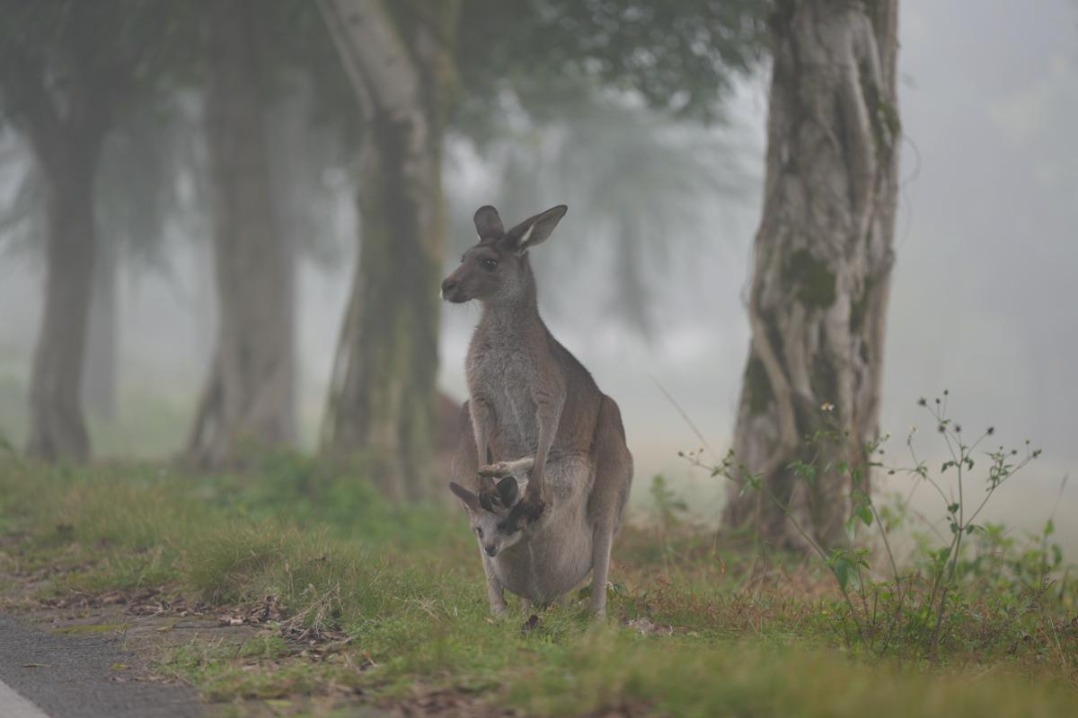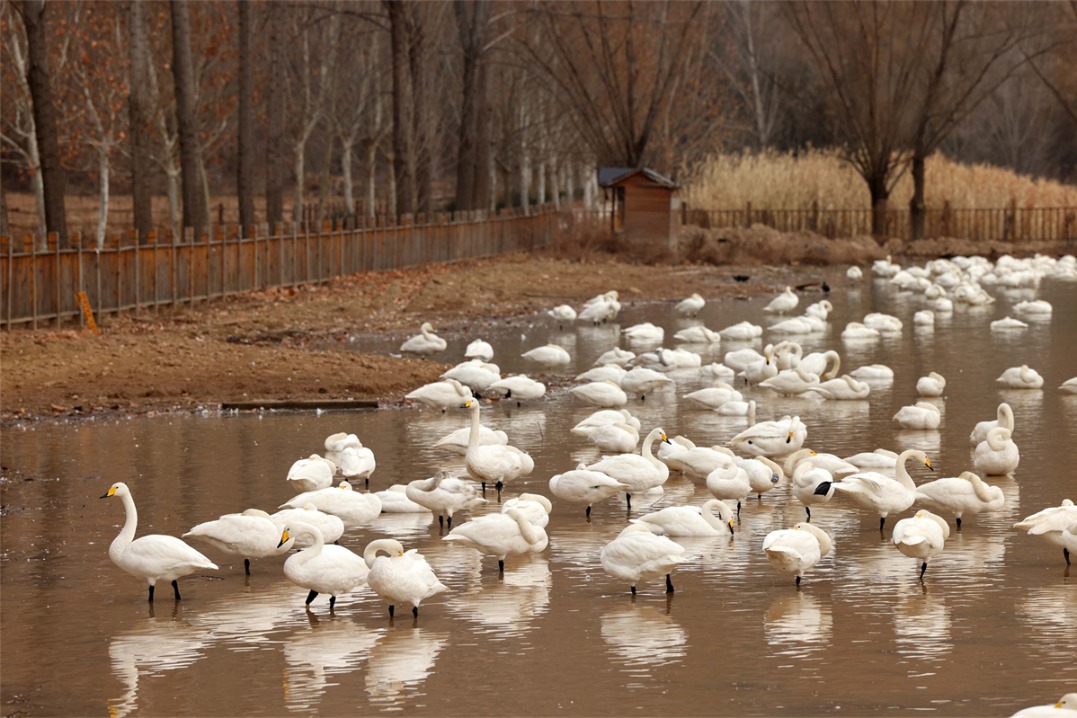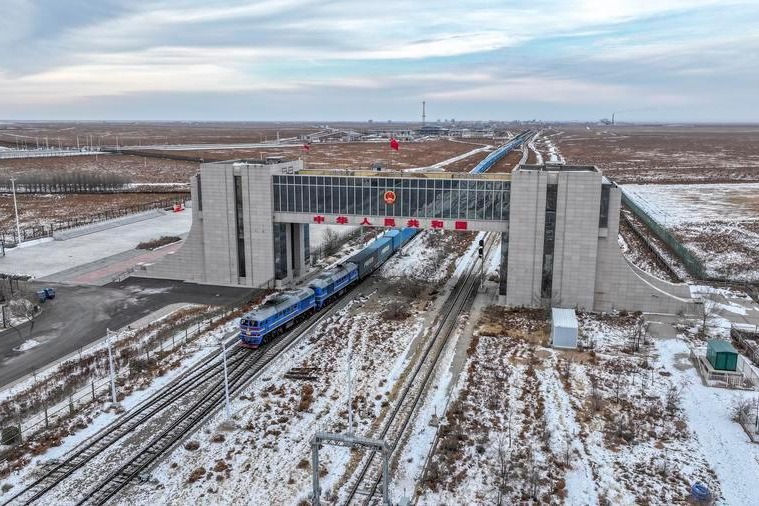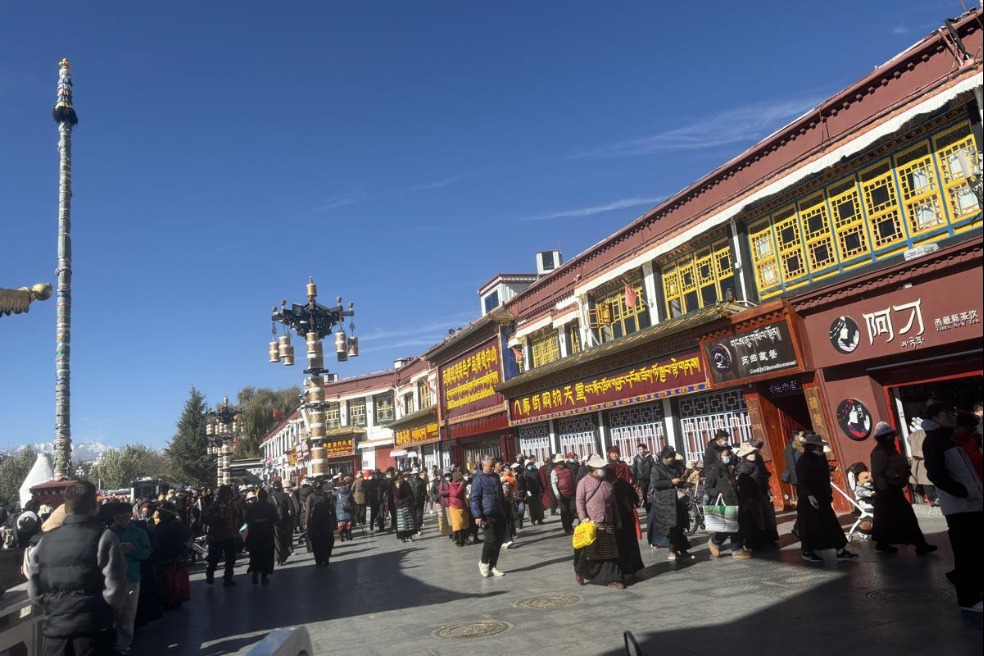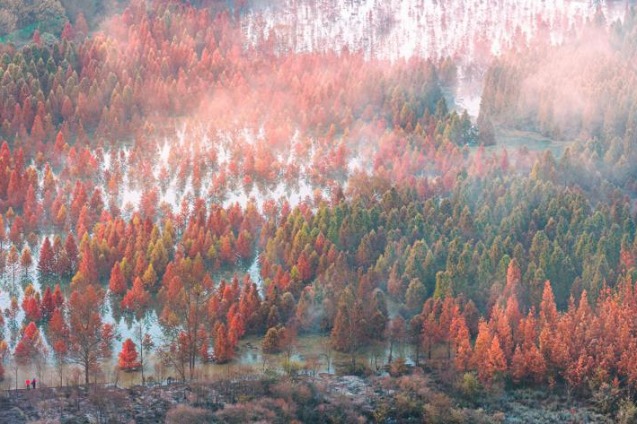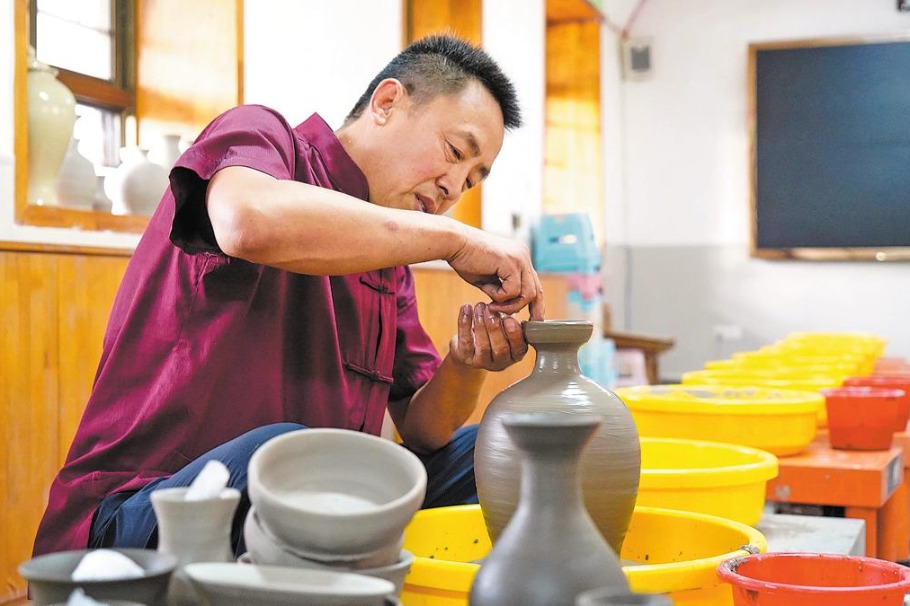Farmer-painters keep Daolang culture alive

URUMQI-Rehman Hapiz, a 76-year-old farmer-painter, has never been to Paris, a city more than 10,000 kilometers from his hometown, but one of his creations has.
His Harvest Festival painting, which portrays a scene in Northwest China's Xinjiang Uygur autonomous region, was exhibited in Paris in 1987. It depicts an old man singing while playing a musical instrument as young men and women dance happily to celebrate a bumper harvest.
Rehman Hapiz, who hails from Kumkusar township in Makit county, said that the vivid, colorful piece is his favorite.
Makit is known for its Daolang culture, and the artworks created by the farmers are one of the county's highlights.
"I've been painting for 55 years. I record my life through art, as it gives me a sense of accomplishment," he said. "Almost everyone here can draw. It's our tradition."
Kumkusar is located on the edge of the Taklimakan Desert. In the past, it suffered from poor transportation links, restricting the lives of residents. They used to draw on the ground or on walls using charcoal, chronicling their lives and pursuits through the characteristic Daolang-style of painting, said Xu Jiawei, head of the Kumkusar Cultural Station.
Daolang means "gathering" in the local dialect, a name derived from the fact that residents often gathered to go hunting or fishing in the past.
"The themes of Daolang-style paintings are close to those of daily life, integrating the farmers' imagination and creativity, and making them popular all over the world," Xu said.
More than 2,800 Daolang-style paintings have been exhibited at home and abroad in recent years, with over 1,000 pieces now in international collections, some at world-famous museums. Currently, Kumkusar has more than 300 well-known farmer-painters and another 800 amateurs.
Zhang Jun, Party secretary of Kumkusar, said that a Daolang-style painting can go for 1,000 yuan ($155), and the most expensive was auctioned for 18,000 yuan.
"Farming in peak season and painting in the offseason is common here," said Zhang, adding that Daolang-style paintings have gradually become an important cultural vehicle.
"To facilitate protection and inheritance of the culture, we organize free training sessions every year for farmers and children," he said.
Kumkusar has used Daolang culture to promote the development of its tourism industry. The town now sells a number of art-related products, including postcards, scarves and refrigerator stickers.
"I earned more than 40,000 yuan this year by selling Daolang-style paintings and other products. Pieces showing landscapes and ethnic Xinjiang culture are most popular with tourists," said Rehman Hapiz, who currently teaches 300 students.
"Though I am 76, I still want to teach more young people and draw more pictures to make our culture known to all."
Xinhua
- Investigation launched after abnormal death of infant in Hefei
- Fujian high court retries father in girl's torture death
- China builds integrated, intelligent monitoring network to safeguard biodiversity
- China sees marked rise in 5-year survival rate for pediatric, adolescent cancers
- 'Homecoming Across the Seas': A song bridging homeland and the world
- 8 dead in fatal Jiangxi car accident
















